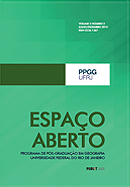Regionalisms and International Migration in South America: Context and Future Perspectives on the Andean Community, Mercosur and Unasur Experiences
DOI:
https://doi.org/10.36403/espacoaberto.2018.20197Keywords:
International Migration, Regionalism, Can, Mercosur, UnasurAbstract
This paper seeks to describe the relationship between regionalism and international migration in South America through the analysis of the Andean Community (CAN), the Southern Common Market (MERCOSUR) and the Union of South American Nations (UNASUR). These associations, which include among their purposes policy of international migration, redefined their objectives or incorporated this phenomenon within the post-liberal framework or post-hegemonic regionalism. Here, factors such as the greater politicization of regional cooperation, the “left turn” in the main countries of the region, the emergence of new narratives in favor of migrants’ rights and greater participation of non-state actors played a key role in this redefinition. As a result, regional regulations on international migration with a human rights perspective and regional citizenship projects have been created. We conclude with some notes on recent changes in the regional political landscape and a return to open regionalism with an emphasis on economics and trade.Metrics
Metrics Loading ...
Downloads
Published
2018-12-22
How to Cite
VILLAMAR, María del Carmen Villarreal. Regionalisms and International Migration in South America: Context and Future Perspectives on the Andean Community, Mercosur and Unasur Experiences. Espaço Aberto, Rio de Janeiro, Brasil, v. 8, n. 2, p. 131–148, 2018. DOI: 10.36403/espacoaberto.2018.20197. Disponível em: https://revistas.ufrj.br/index.php/EspacoAberto/article/view/20197. Acesso em: 2 apr. 2025.
Issue
Section
Articles
License
The copyright of articles published in Espaço Aberto belong to their respective authors with rights to first publication conceded to the journal. Every time that the article is cited and reproduced in institutional repositories or personal and professional web pages the link to the journal web page must be provided. The articles are simultaneously licensed under the Creative License Commons BY-NC-SA 4.0.


